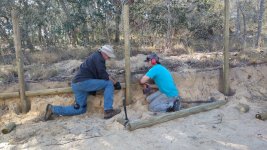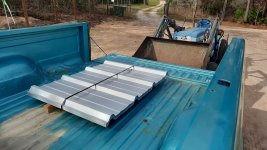I did highway asphalt for 4 years. We averaged about 2-5 miles per day, only did city work if there was a big enough job for it to be worth it.
also made asphalt at the hot plant for much of that time.
I do prefer the two lift method over everything, as even small imperfections (not always readily noticeable) show through easy in the form of slightly thin spots.
For instance, when the screed on the paver is set, any stopping and starting of the paver inserts a small bump. The cause is the screed settles very slightly when it stops motion.
I would always toss 2 shovels over that spot and screed out the segregation, this is what the serrated edge of the lute is for.
The other major factor is where the concrete meets the new asphalt. Most tack-truck drivers are too lazy to do this right, but your going to want 100% tack coverage where the concrete and mix meet. And take the time to scrap the dust out of this edge, as you see on streets, every gutter that’s blown out is from the dust pile at the seam sponging up and blowing out the asphalt.
I’m in ND where the state sits on a lot of yellow clay and scoria. So for a lot of highway projects we use petromat underpayment to prevent heaving, though the winter usually makes it happen in time anyway.
Spent a lot of time with asphalt and frankly I quite miss that job!
Very interesting! I actually had to look up what scoria is. Neato.

Unfortunately, the finished asphalt depth in my installation will only be 1 5/8 inches, so a double lift probably won't happen.
As I mentioned early in this thread, the project will be taking awhile. It's actually taking much longer than I originally thought. That's mostly due to availability of my neighbor friends.
A couple weeks ago we collaborated on the retaining wall structure design.
The upright fence posts were replaced by 8 foot posts which are augmented by horizontal cross-tie posts (some leftover, some new) which are held in place by rebar inserted through the uprights. Much drilling and whanging with sledge hammers occurred. Then corrugated steel was cut to length and installed on the cross-ties.

The fenceposts were rearranged and laid out per the plan.

Uprights and cross-ties were drilled to allow the rebar to be installed. The rebar went about a foot into the end of the cross-ties on both ends.

Moving along.


There was a miscommunication about the corrugated steel, so that became an issue.

But it was installed nonetheless.


















































